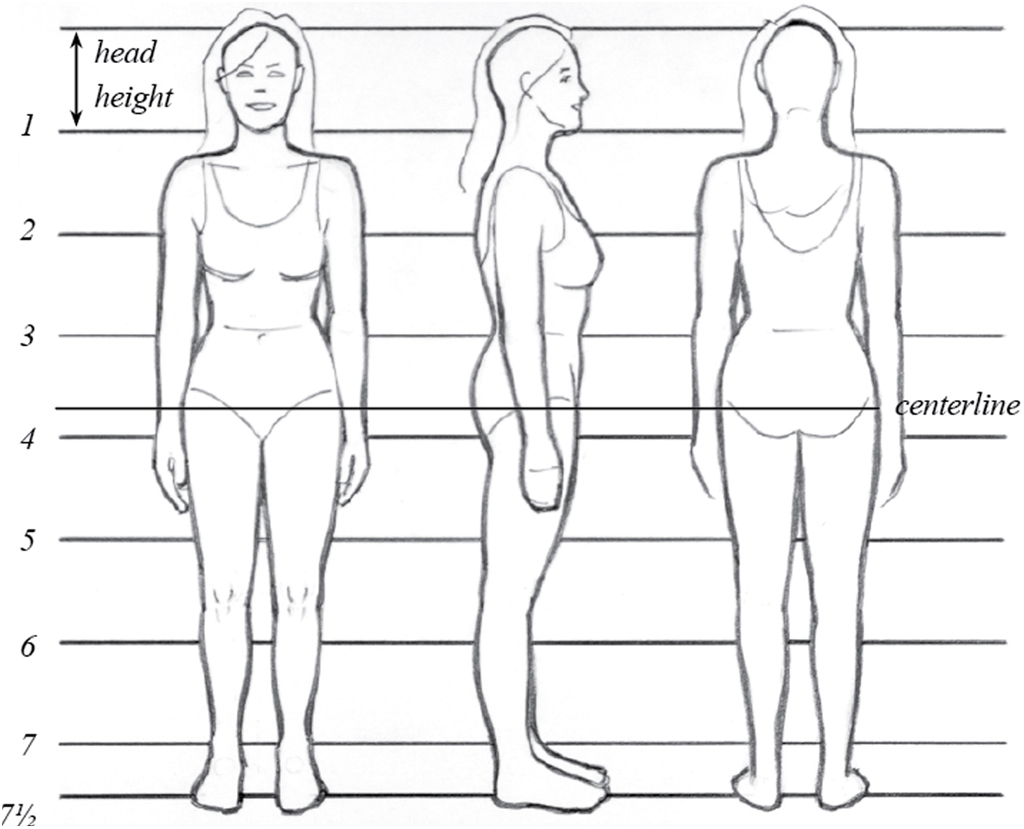
Studying the proportions, forms and features of the human body will benefit the drawing process. Though proportions may differ depending on the gender, age and body type, all people share common structure and movement.
For the average adult, the length of the legs comprises half the height. The height of the human figure is about the same as the head height counted out seven-and-a-half times.

Notice the placement of the elbows and knees as well as where the hands rest in relation to the upper legs. The male form has wide shoulders and narrow hips. It can have a bulky appearance with thick features including a large torso and a low waistline. When interpreted in drawing, the male figure can show an angular feel and chunky features to emphasize the muscular form.

The female form, when compared to the male, has narrow shoulders and wide hips. Having a high waistline, the female form has a smaller torso and larger abdomen than the male figure. The female figure can have a look of gracefulness, which includes delicate features.
If you have a large mirror or a camera with a remote shutter release, you can use yourself as a model for figure drawings.